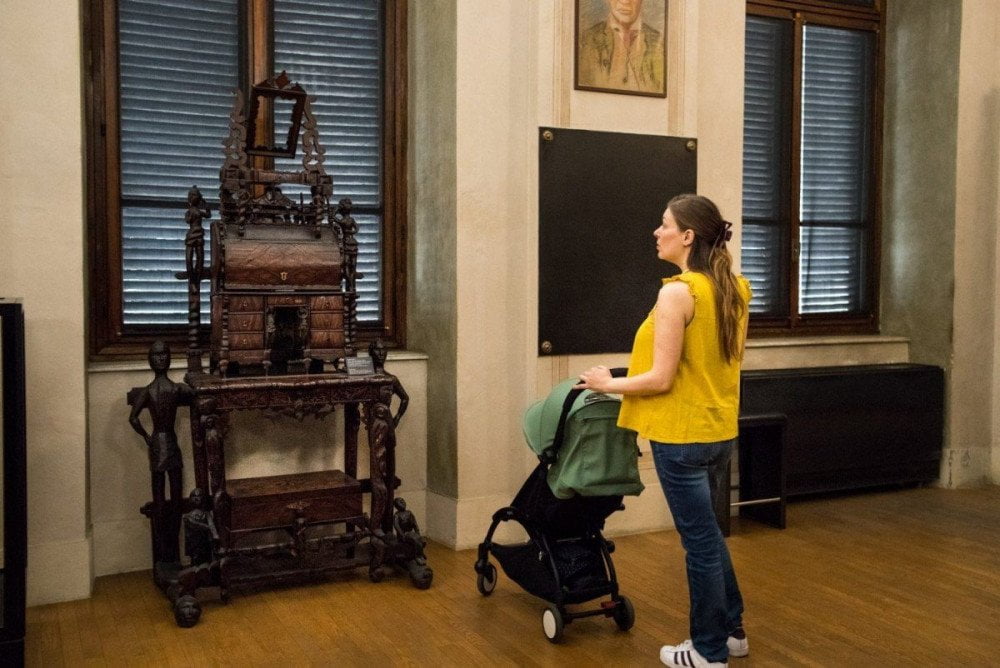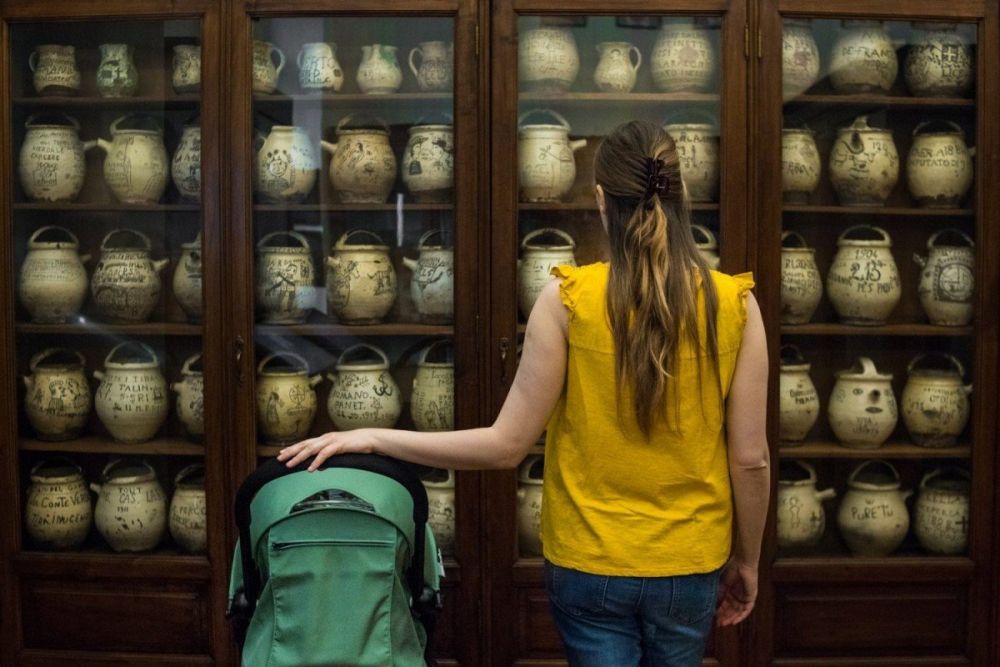The Museum of Criminal Anthropology in Turin showcases the work of Cesare Lombroso, a 19th-century scientist famous for his research on physiognomy. While we agree that his theories linking physical appearance to criminal behaviour are discriminatory, they influenced modern debates on mental health. The museum serves as a reminder of Lombroso’s legacy in criminology.
Table of Contents
Cesare Lombroso: the scientist famous for his flawed theories
Starting with Lombroso’s gross scientific errors, the Museum of Criminal Anthropology draws attention to ever topical issues such as prejudice, (re)education and the social environment. Cesare Lombroso, with his theories on the appearance of criminals and deviants, reflected the beliefs of his time. His research was not intended to discriminate, but to improve the society in which he lived.
PLAN YOUR TRIP TO TURIN
Purchase the Torino + Piemonte Card online to enjoy free public transportation in Turin, as well as access to museums, castles, fortresses, and royal residences in Turin and the Piedmont region.
While travelling in Italy, you can stay connected with family and friends using the Holafly eSIM, which offers unlimited data at 3G, 4G, and LTE speeds. Additionally, be sure to get Heymondo travel insurance for a worry-free adventure.
Cesare Lombroso was a remarkable scholar, innovator and a law-abiding citizen for his time. He served as a military doctor, and participated to the campaign against brigandage for the newly formed Kingdom of Italy. He devoted himself to scientific research to cure pellagra. Later, he held management positions in asylums and prisons. Lombroso was also a member of the socialist party and always supported the weaker social classes.
Cesare Lombroso’s background
In order to understand how someone with a passion for improving society could develop offensive and discriminatory theories, we must consider the historical context in which they lived. In the 19th century, the humanities such as psychology, sociology, and anthropology were first established. This was a time of great intellectual fervour. Scientists inspired one another to create new theories, steeped in the current of positivism.
Despite having good intentions, Cesare Lombroso made significant errors in much of his research. For instance, he believed that pellagra was caused by rotten maize flour. This because it only seemed to affect people who used it heavily. In reality, people with low-income who mainly ate polenta did not consume spoiled food. However, their diet based on such food lacked in vitamin PP, yet to be discovered.
Indeed, we know Cesare Lombroso mostly for his weird theories on atavism and the idea of a ‘born criminal’. However, these theories were flawed. In fact, they solely relied on the measurement of body parts of criminals and deviants, without taking into account the social context. Nevertheless, Lombroso’s errors were instrumental in the development of modern human sciences.

The physiognomic ‘science’ of Cesare Lombroso
Nowadays, we know that physiognomy is a pseudoscience and no one would argue that a certain appearance can correspond to psychological characteristics. In the 19th century, on the other hand, it was a fully-fledged part of scientific research. Its purpose was to investigate the relationship between deviant behaviour, individual responsibility and the cultural and social environment.
However outlandish this research may seem today, in the historical period of positivism people thought that science could solve all problems. Moreover, it was precisely from the minute measurements of habitual offenders that scientists began to question the validity of the sentences assigned to prisoners.
Cesare Lombroso claimed that criminals had different physical characteristics to ‘normal’ people and applied the same theory to people with mental disorders. Observation of the skull of the brigand Villella, for example, led him to identify a small pit as a degenerative character present in the alienated and delinquent.
The ‘born criminal’ theory
Further measurements later led him to the erroneous conclusion. For example that the ‘born delinquent’ generally had pronounced cheekbones, a small head and a receding forehead. The brigand Gasparone was labelled ‘the true type of the born criminal’ because of his physical appearance. Lombroso’s interpretation of brigandage was that of “a kind of savage justice”.
The physical characteristics found in the prisoners made Cesare Lombroso produce his questionable theory of atavism, the return of ‘primitive’ characters in criminals. Freely inspired by Darwin’s theories on evolutionism, Lombroso ended up accusing even carnivorous plants of delinquent behaviour. According to him, they had in fact maintained brutal and ‘primitive’ behaviour.
Just as carnivorous plants could not refrain from slaughtering insects, criminals of the ‘born criminal’ type also committed crimes because their nature did not allow them to adapt to modern society. According to Lombroso, the punishment of those who could not behave differently was unjust. Deviant behaviour was generated by atavistic characteristics, similar to those of lower animals and ‘primitive’ man, and could not be controlled.
Tattoos and atavism
Cesare Lombroso’s theories on atavism also extended to people with tattoos. As a military doctor, he noticed that tattoos were more frequent in soldiers from lower social classes. Later he noted the same presence of tattoos among criminals.
Lombroso therefore included tattoos, a “custom so widespread among savages and prehistoric peoples”, in his theory of atavism, labelling them as a regression to primitive forms. Today that tattoos are widespread, it is interesting to take a look to this part of Turin’s Museum of Criminal Anthropology.
Women’s inferiority
Cesare Lombroso, like all his contemporaries, then considered women to be physically, morally and intellectually inferior. Intelligent women, as well as sex-workers or criminals, were an exception to be studied.

The spontaneous art of inmates
The exhibition of artefacts of prisoners and inmates of mental hospitals at Museum of Criminal Anthropology of Turin is really interesting. In some cases, these are true artistic expressions. You can see almost surreal objects, such as the extremely heavy rag dress created by the inmate Versino in the Collegno asylum. Or real works of spontaneous art, such as the finely painted and inlaid mirror by Eugenio Lenzi.
Inside the museum, you can see an entire wall of engravings on terracotta pots that the inmates of the Le Nuove prison in Turin used for drinking. Today considered artistic expressions of the inmates, for Lombroso the inmates’ graffiti were “criminal objects” that signalled the delinquent nature of their authors.
From ‘criminal objects’ to the birth of the forensic police
Cesare Lombroso’s collecting mania of ‘criminal objects’ gave the impetus for the creation of the scientific police. It was in fact founded a few years later by his pupil Salvatore Ottolenghi, who realised its practical usefulness. Lombroso, on the other hand, saw the weapons used in crimes only as a way of studying the ‘criminal man’. His research was based solely on the cataloguing of knives, crucifixes-daggers used by false monks and other more or less unusual weapons.
Why visit the Cesare Lombroso Museum of Criminal Anthropology
Many people visit the Museum of Criminal Anthropology at the University of Turin intrigued by the objects collected by Cesare Lombroso for his research. Anatomical preparations, photographs, death masks, bodies of crime and artistic productions are lined up neatly, in a kind of cataloguing madness.
However, no morbidity is perceived in the museum. Only an obsession with measurements. Any deviant behaviour was traced back by Lombroso to a question of form and size, the only way research was done in the 19th century. You can see the same obsession with cataloguing in the adjacent Museum of Human Anatomy, if you buy the combined ticket.
The Museum of Criminal Anthropology of the University of Turin offers above all an important reflection on the scientific method. In addition, its exhibition draws attention to the ever-present concepts of normality and deviance. Although Lombroso’s theories were completely wrong, he was the first to talk about the responsibility of crime and the justice of punishment. He deserves to be remembered for this very important reason, more than his gross scientific errors.
Informazioni utili per visitare il Museo Lombroso a Torino
The Lombroso Museum is located in Turin, in the San Salvario district, near the Valentino park. In the same building are the other 19th-century university museums: the Fruit Museum and the Museum of Human Anatomy. If you are curious about them, read my articles to find out what there is to see.
You can visit them all in half a day with a combined entrance ticket. The Fruit Museum and the Lombroso Museum share the entrance from Via Pietro Giuria. Instead, to visit the Museum of Human Anatomy you have to enter from the opposite side of the building, on Corso Vittorio.
You can easily reach the Lombroso Museum by bus or by metro and then on foot. I advise you to check with Google Maps the best route from your starting point in Turin. I do not recommend arriving by car because there is little parking in the area and it all costs money. The most convenient parking is certainly in the Torino Esposizioni area, opposite the Valentino Park.
Museo di Antropologia Criminale Cesare Lombroso
Via Pietro Giuria, 15
10126 Torino
Where to sleep in Turin
In Turin you can sleep either in elegant hotels located in historical buildings or in modern flats with all comforts, the choice depends only on your taste. Since I live in Turin I can recommend the best hotels, which are the Best Western Plus Executive Hotel and Suites and the luxurious Hotel Principi di Piemonte, both in the city centre. If you are looking for a cheaper option, in modern hostels that also have private rooms, then Combo or CX Belfiore are for you, both located in vibrant neighbourhoods full of restaurants and nightlife.
Together with the other university museums, Fruit and Human Anatomy, the Lombroso Museum offers a comprehensive overview of 19th-century science. Write in the comments if you already know this curious museum in Turin, at least by reputation, and if you have already visited it.
